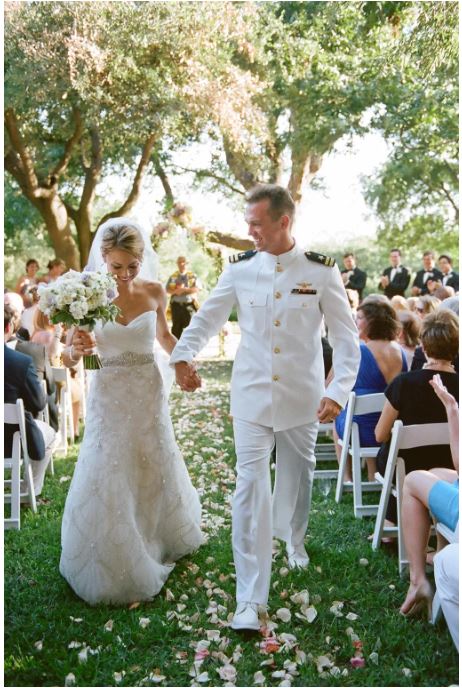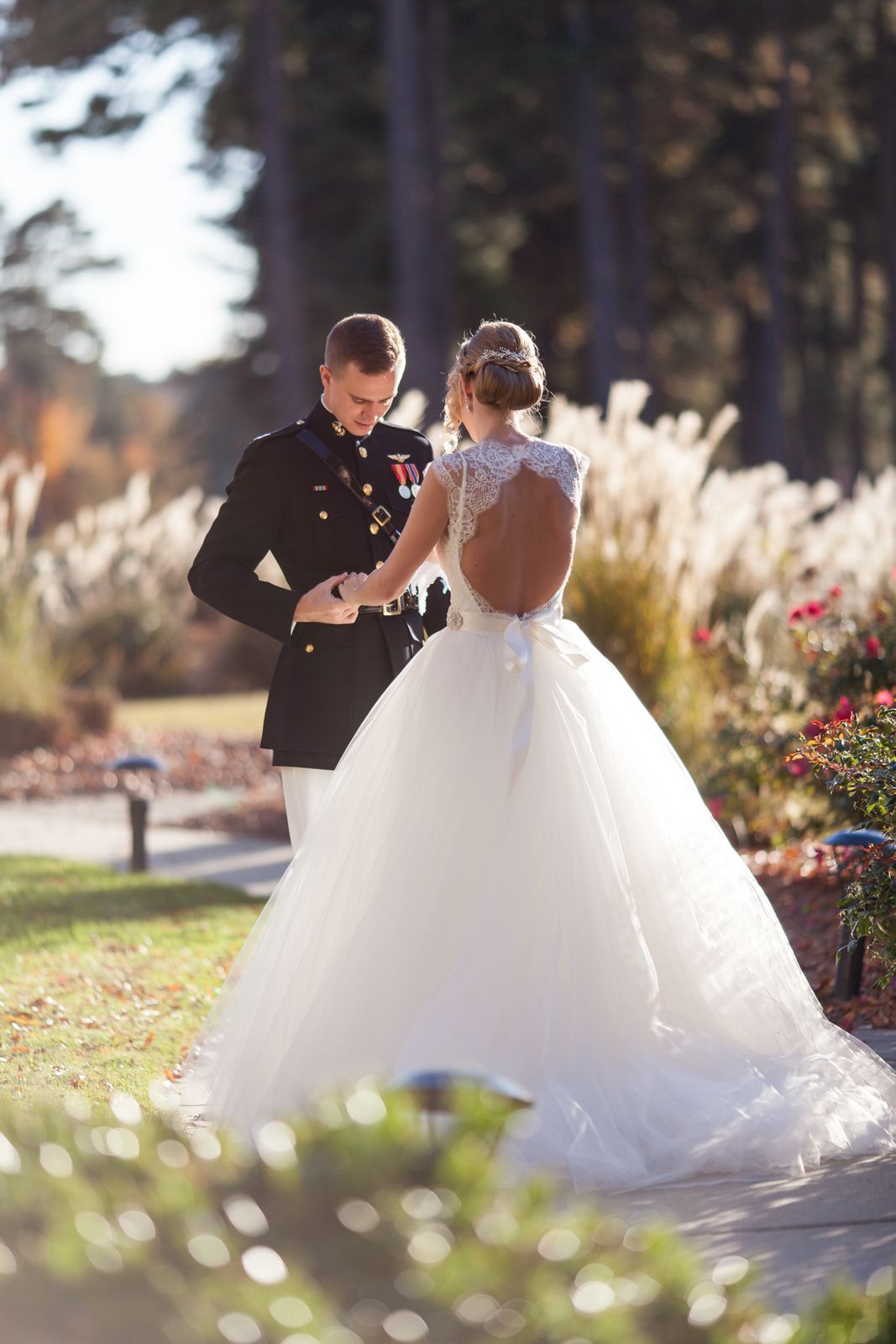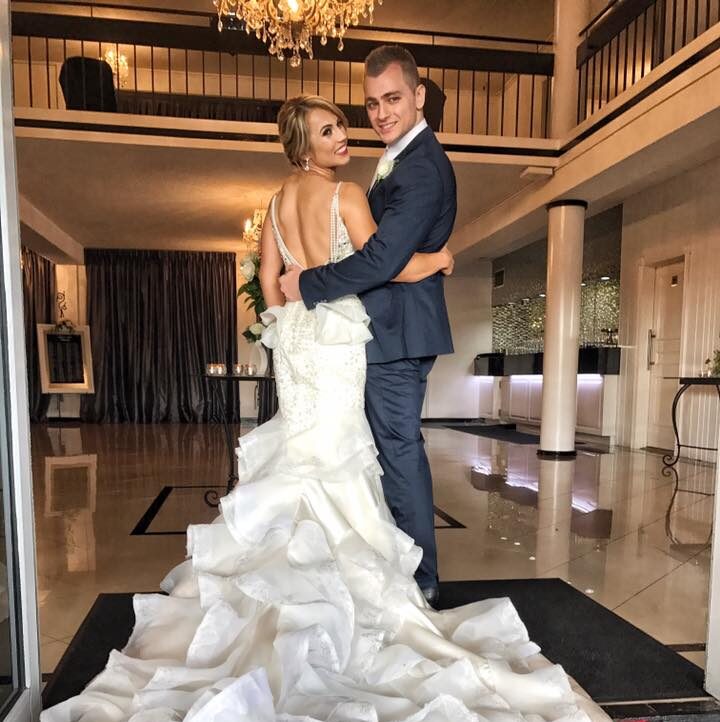Planning a military wedding goes beyond just saying “I do”—it’s a celebration of love, duty, and tradition. As someone who’s been involved in countless military weddings, I know firsthand that these events carry a unique set of customs and protocols that require careful thought. From choosing the right venue to navigating military-specific attire and traditions, there’s a lot to consider. In this guide, I’ll share insights and advice to help you create a wedding that honours military service and reflects your personal style and commitment to each other. Let’s get started!
Understanding the Key Elements of a Military Wedding
Planning a military wedding is unlike any other wedding. It’s not just a celebration of love—it’s also a tribute to dedication, service, and sacrifice. I’ve been involved in countless military weddings over the years, and I can tell you that these weddings carry a special kind of weight. From the protocols to the traditions, military weddings are deeply symbolic and meaningful, and they require careful thought and consideration.
The Importance of Military Wedding Protocols
When I first began working with military couples, I quickly realised that military weddings have their own set of rules—rules that go beyond typical wedding etiquette. Understanding military protocols is crucial from the very beginning to ensure that your wedding goes off without a hitch.
Here’s why military protocols matter:
- Respect for Tradition: Military weddings are steeped in long-held customs that celebrate the couple’s service to their country. These customs, like the sabre arch or uniform dress codes, aren’t just for show—they carry real meaning.
- Military Regulations: Depending on the branch of service, there are specific guidelines you’ll need to follow. Whether it’s the dress code or the order of the ceremony, understanding these regulations will keep things running smoothly.
- Permissions and Approvals: In the past, service members were required to get formal permission from their Commanding Officer (CO) to marry. While this isn’t always necessary now, it can still be required for specific situations, like marrying outside of your uniform or holding a destination wedding. Plus, it’s always a good idea to have your CO’s approval for leave during the wedding and honeymoon.
When planning a military wedding, reaching out to your CO early is a great first step. I worked with a couple a few years ago where the groom, stationed overseas, needed to secure leave. They went through the process of contacting his CO early, which helped them schedule their wedding around his deployment dates. While it required extra time and patience, their ceremony came together beautifully, with everyone on the same page.
Navigating the Military Wedding Customs
As with most weddings, military weddings are full of meaningful traditions. Depending on the service branch, there are different rituals that you’ll need to be aware of. These rituals aren’t just about ceremony—they’re about honouring service, commitment, and sacrifice.
- Sabre Arch: This is one of the most anticipated parts of any military wedding. If you’ve ever seen a couple walk through a sabre arch, you know it’s a moment that fills the room with emotion. This tradition symbolises the couple’s journey into married life, guarded and supported by their fellow service members.
- Dress Codes and Attire: The uniform, which often plays a starring role in military weddings, has specific guidelines. For example, men in uniform must follow strict grooming regulations, including a clean-shaven face and specific haircut length, all while adhering to ceremonial dress codes.
- Ceremony Traditions: Whether it’s a salute during the vows or military music during the recessional, there are many small but important military wedding customs that should be included in your ceremony.
I recall a wedding where the groom, a Navy officer, wore his full dress uniform, and his best man was also in uniform. The bride, not wanting to overshadow her groom, wore a beautiful white gown with small accents of Navy insignia. The ceremony, set in a chapel, was an incredible representation of their service and love. As the couple walked under the saber arch, the emotions in the room were palpable. It was a moment that everyone present would remember for a lifetime.
It’s these small touches that turn a military wedding into something uniquely powerful. Understanding and embracing military wedding customs is a big part of why these weddings stand out.
How to Choose the Perfect Venue for Your Military Wedding
Choosing the right venue for a military wedding is more than just picking a beautiful location—it’s about selecting a space that aligns with military traditions while accommodating your personal style.
Military Chapels vs Traditional Venues
Military chapels are a popular choice for many couples due to their historical significance and connection to the armed forces. These chapels are often steeped in tradition and provide an ideal setting for a military wedding. I’ve worked with couples who chose military chapels and found the experience deeply meaningful. For instance, one couple got married in a Navy chapel, surrounded by military flags and the reverence of the space—it added an emotional layer to the ceremony.
However, booking a military chapel can be competitive and may require advanced planning, sometimes up to a year ahead. Eligibility restrictions can also apply, as only active-duty service members or their dependents are typically allowed to marry in these chapels.
Alternatively, some couples opt for civilian venues, which can offer greater flexibility and a more personalised setting. For example, I recently assisted a couple who decided to marry at a vineyard, combining military uniforms with a scenic, non-traditional setting. It was the perfect mix of military tradition and a relaxed atmosphere. While a civilian venue may not carry the same military connection, it allows for creative flexibility.
Security Protocols and Access for Guests
If you decide to hold your wedding on a military base or installation, you’ll need to consider security protocols. All civilian guests will typically need to follow specific base access procedures, including registration and security checks.
I’ve organised weddings where base access was an important detail. For one wedding at a military base, all guests had to submit their names and identification well in advance. It’s not difficult to manage, but it does require early communication and planning. Be sure to provide guests with clear instructions about base access on your wedding website and communicate with vendors to ensure they know the security requirements as well.
Planning Your Ceremony: Embrace Traditions and Symbolism
A military wedding ceremony is rich with traditions and symbolism. It’s about more than just exchanging vows; it’s a celebration of your commitment to each other and to the country. These traditions help make your day feel uniquely meaningful.
The Sabre Arch: A Tradition Like No Other
The Sabre Arch is one of the most iconic parts of a military wedding. Service members form an arch with their raised sabres or swords, and the bride and groom walk through it as a symbol of their safe passage into married life, guarded by their fellow service members.
It’s a beautiful tradition, often accompanied by fun moments, such as the last two ushers blocking the way and demanding a kiss before the couple can pass through. Depending on the branch, the groom’s uniform will dictate whether sabres or swords are used, but the tradition remains the same across services.
Military Vows and Music: Incorporating Service Branch Traditions
Military vows often include a promise not only of love but also of loyalty to the service. Many couples add personal touches that reflect their commitment to their country. For example, a groom might vow to protect his partner just as he has sworn to protect his country. This makes the vows deeply personal and meaningful.
Music is another way to honour military tradition. Many couples choose their service branch’s song for their recessional or incorporate a patriotic anthem. This adds a sense of pride and unity to the ceremony, as service members and their families recognise the significance of the music.
Military Wedding Reception: Seating, Cake Cutting, and Decorations
Once the ceremony is over, the reception is where the celebration truly begins. However, a military wedding reception still carries its own set of traditions, from seating arrangements to the iconic cake cutting.
Special Seating Arrangements for Military Personnel
One thing that sets military weddings apart is how seating arrangements are handled. At a military wedding, guests are often seated according to their rank, which adds a sense of respect and order to the event. For instance, the bride’s commanding officer or the highest-ranking officer present is given a place of honour, often near the front with the bride’s family.
I worked on a wedding at a naval base where this was done perfectly. It was a subtle but meaningful way of showing respect for the military personnel who were attending. The highest-ranking officers were seated at the front, followed by lower-ranking members in order of their position. This method ensures that everyone feels valued and maintains the traditions of military etiquette.
Cutting the Cake with a Sabre: A Time-Honoured Tradition
Cutting the wedding cake with a ceremonial sword or sabre is one of the most memorable moments at a military wedding. It’s symbolic, and it’s also a fantastic photo opportunity. In many weddings I’ve planned, the groom, in full uniform, presents his ceremonial sword to the bride, and together, they cut the first slice of cake. This tradition represents the couple’s shared life, as they join forces in both love and service.
It’s a fun and dramatic moment that always adds excitement to the reception, and it’s a great way to get your guests involved in the celebration.
Military Themed Décor and Reception Ideas
Military-themed décor can elevate your reception, whether you go subtle or full-on. Many couples choose to incorporate patriotic colours like red, white, and blue, or branch-specific colours and insignia. I’ve worked with one couple who used miniature flags as centrepieces, while another had their wedding cake decorated with military symbols and rank insignia.
For a more personalised touch, you can incorporate emblems such as cap badges or symbols specific to your service branch, like wings for the Air Force or anchors for the Navy. These small but meaningful details make the day feel even more special.
Key Considerations for Military Couples: Flexibility, Insurance, and Budgeting
Planning a military wedding comes with unique challenges. Given the unpredictable nature of military life—think deployments, relocations, and last-minute duty assignments—being flexible is crucial. Along with flexibility, understanding the importance of wedding insurance and budgeting properly will help ensure everything runs smoothly.
Adapting to Unpredictability: Flexibility is Key
The one thing you can count on when planning a military wedding is that things may change—sometimes at the last minute. Military life is unpredictable, and it’s not uncommon for wedding dates to be shifted due to deployments or sudden orders.
I’ve worked with couples who had to reschedule their wedding days because one partner received orders to be stationed elsewhere or was called away for deployment. In these cases, flexibility was key. One couple I worked with had their wedding date set, but a last-minute deployment meant they had to postpone it by a few months. Though frustrating, they were able to adjust, and in the end, the ceremony turned out to be even more meaningful.
Building flexibility into your plans is essential. I recommend keeping a backup date in mind and ensuring that your venue and vendors are aware of the potential for last-minute changes.
Wedding Insurance for Military Couples
Wedding insurance is a must for military couples. It’s something that many people overlook when planning their wedding, but when you’re dealing with the potential for unexpected deployments or duty changes, it’s wise to cover yourself. I’ve seen couples benefit from wedding insurance when they had to shift their wedding date due to military obligations.
Wedding insurance can help protect your investment if a service member is deployed or has to relocate unexpectedly. Ensure that your policy covers military-related disruptions, such as deployment or reassignment. It’s also helpful to ask your vendors whether they provide any insurance or coverage for military couples in these situations.
Budgeting and Discounts: Managing Costs for Military Weddings
Military life often comes with budget constraints, particularly for younger or enlisted couples. Fortunately, many vendors offer military discounts, which can help ease the financial burden. Don’t hesitate to ask about military discounts when booking your venue, photographer, or caterer. These discounts can add up and make a significant difference.
For example, I worked with a young couple where the bride was an enlisted Army member, and the groom was a civilian. They were able to secure discounts from multiple vendors, including the venue, florist, and photographer. This allowed them to keep costs manageable without sacrificing the quality of their wedding.
It’s also important to keep track of additional costs, such as the expenses associated with military uniforms and travel. These can add up quickly, so make sure you factor them into your overall budget when planning.
Unique Personal Touches for Your Military Wedding
While military weddings follow many traditional protocols, there’s plenty of room for creativity. Incorporating personal touches can make your military wedding even more special, reflecting your unique story as a couple while still honouring military traditions.
Adding Personal Military Elements to Your Big Day
Military couples often choose to add small, meaningful elements to their wedding that reflect their service. One couple I worked with included a special tribute to the groom’s battalion. They had a commemorative challenge coin as a wedding favour for guests. It was a beautiful way to involve guests in the couple’s military journey and to add a personal element to the reception.
Other personal touches could include using an old badge or nametag from your partner’s uniform in the wedding attire, or even incorporating the couple’s regimental colours into the wedding’s colour scheme. Some couples choose to honour their service with a military-themed cake—one groom I worked with asked his baker to decorate the cake with his unit’s insignia, and it turned out to be a real conversation starter.
Incorporating Military Symbols and Traditions
You can also weave military traditions into your photos, invitations, or reception décor. Some couples choose to include military emblems on their invitations, while others feature them in their wedding photos or as part of their décor. For instance, the bride might wear a veil with military insignia sewn into it, or the groom could add a small military symbol to his boutonnière.
If you’re looking for a fun way to end the night, consider a paper aeroplane exit after the ceremony, a nod to the military’s use of paper in informal communications. It’s a quirky, creative way to add a lighthearted touch to your military wedding while paying homage to your partner’s service.
My Advice for a Seamless Military Wedding Experience
Planning a military wedding requires more than just following tradition; it’s about creating a day that feels as unique as your relationship while honouring the values and customs of the military. Here are a few pieces of advice to help make your wedding as smooth and stress-free as possible.
Communicate Clearly with Vendors and Guests
The key to a successful military wedding is clear communication. Ensure that all your vendors, from caterers to photographers, are well-informed about the military traditions you’ll be incorporating into the ceremony and reception. This is particularly important for military weddings that take place on bases or military installations, where vendors may need access clearance.
I worked with one couple where the photographer had never worked at a military base before. We ensured they were briefed on the security protocols and the specifics of military wedding traditions. It made a world of difference when they showed up for the big day, as they were prepared and able to capture every important moment seamlessly.
When it comes to guests, particularly those from the civilian side, it’s essential to explain the military elements of the wedding, such as the dress code and traditions like the sabre arch or salute. I’ve seen weddings where civilian guests were a bit unsure about how to behave or dress. By providing detailed instructions on your wedding website or in the invitations, you can help guests feel at ease and prepared.
Seek Help from Other Military Couples and Professionals
Military weddings come with their own set of challenges, and while it’s tempting to do everything on your own, it’s worth seeking help. Many military couples have faced similar challenges, and connecting with them can provide valuable insights. For example, a couple I worked with sought advice from friends who had already gone through the military wedding process. They learned about potential pitfalls, such as booking venues early due to military scheduling conflicts, and it helped them avoid common mistakes.
Another option is to hire a wedding planner who has experience with military weddings. Military wedding planners understand the ins and outs of military etiquette, scheduling, and regulations, and can be a great resource. I’ve worked with a couple who brought in a wedding planner familiar with military weddings, and it was a game-changer. The planner helped navigate the base access, officiant requirements, and military-specific decor, making everything run smoothly.
Let’s Get Straight to the Point
Planning a military wedding involves a blend of tradition, military protocols, and personal touches. Key elements include selecting the right venue—whether a military chapel or a civilian venue—and understanding the importance of military customs like the sabre arch, military dress codes, and ceremonial sword use for cutting the cake. Flexibility is essential due to the unpredictable nature of military life, and wedding insurance is a smart choice. By incorporating personal military touches and clear communication with vendors and guests, you can create a meaningful and memorable day that honours both your love and service.




